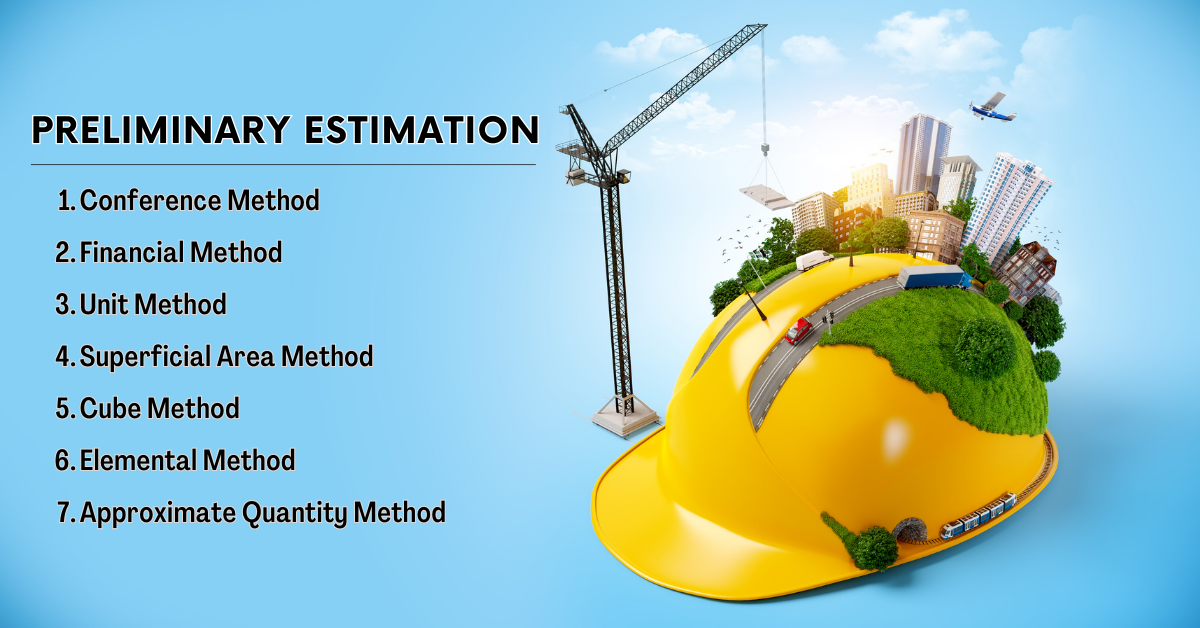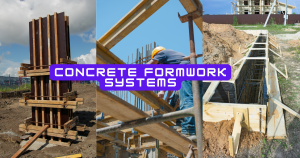Introduction
Have you ever marveled at the complexity and precision of construction projects? From towering skyscrapers to intricate road networks, the construction industry is a symphony of planning, execution, and calculated estimation. At the heart of this harmonious dance lies preliminary estimating methods, the key to unlocking accurate projections that pave the way for successful construction endeavors.
In this article, we will embark on a journey to unravel the secrets of these methods, exploring their importance, concepts, practicality, and more. So, tighten your hard hat and join us as we dive into the world of preliminary estimating methods in construction.
Understanding Preliminary Estimating Methods
Defining Preliminary Estimating Methods
Preliminary estimating methods encompass a range of techniques used in the early stages of construction projects to estimate costs, timeframes, and resources required for the endeavor. These methods serve as guiding lights for stakeholders of construction projects, helping them make informed decisions, develop budgets, and establish project feasibility. Without a solid foundation in preliminary estimating, projects can stumble into financial turmoil, unexpected delays, and costly misjudgments.
The Importance of Preliminary Estimating Methods
Imagine embarking on a grand voyage without a navigational map. Chaos would ensue, as you would be left adrift in a vast expanse of uncertainty. Similarly, in construction, preliminary estimating methods act as the map, providing a clear direction for the project’s success. By employing these methods, stakeholders in construction projects can:
- Set realistic budgets and financial targets
- Assess the feasibility and viability of the project
- Determine appropriate resource allocations
- Identify potential risks and develop contingency plans
- Establish a strong foundation for accurate cost estimation throughout the project’s lifecycle
Now that we understand the significance of preliminary estimating methods, let’s embark on a detailed exploration of the various techniques at our disposal.
1. Conference Method
With its emphasis on collaboration and shared expertise, the Conference Method is a powerful tool that harnesses the collective wisdom of stakeholders involved in the project. Let’s delve into the intricacies of this method and discover its practicality.

Concept and Purpose
The Conference Method, as its name suggests, involves bringing together key stakeholders, including architects, engineers, contractors, and subcontractors, to discuss the project’s requirements and objectives. By engaging in a comprehensive dialogue, participants can share their insights, perspectives, and experiences to arrive at a more accurate estimate.
For optimal outcomes, it is crucial that the group possesses relevant experience in estimating similar projects. This method is used in situations where there is a lack of or inappropriate of historical cost data.
Practical Example
Imagine a group of skilled craftsmen gathered around a blueprint, each bringing their unique expertise to the table. The architect shares insights on the structural complexities, the engineer discusses potential design challenges, and the contractor sheds light on material costs and labor requirements. By collaborating and pooling their knowledge, the participants can collectively arrive at a preliminary estimate that reflects the project’s intricacies.
While the Conference Method relies on the power of collaboration, the Financial Method puts numbers at the forefront, employing a systematic approach to estimate costs. Let’s delve into the depths of this method and its applicability.
2. Financial Method
Concept and Purpose
The Financial Method revolves around the meticulous financial analysis to estimate project costs. This method involves scrutinizing historical data, market trends, inflation rates, and other financial factors to derive a comprehensive estimate. By diving into the numbers, stakeholders can gain valuable insights into potential expenditures, helping them make informed decisions.
The Financial Method for cost estimation involves determining the maximum allowable expenditure for an investment project based on the expected return over a specific time period. This method takes into account the income generated from rentals and the various outgoings (such as maintenance, repairs, management, etc.) to calculate the return on investment. It is also necessary to consider non-usable or non-rentable floor areas when performing the calculations.
Once the projected net income from the investment is determined, a cost limit is established, and the design of the project is developed within this predefined budget. It is important to note that the time value of money must be taken into consideration when setting the budget. In an inflationary economic system, the value of money depreciates over time. Therefore, the income generated throughout the project’s life cycle needs to be brought to a specific point in time for comparison with the initial investment made at the beginning of the project.
Practical Example
Suppose a real estate developer is planning to construct a commercial building with the intention of generating rental income. The developer wants to determine the maximum amount they can spend on the project while ensuring a satisfactory return on investment.
To begin, the developer conducts market research and analyzes rental rates for similar properties in the area. Based on this research, they estimate an annual rental income of $200,000 for the completed building.
Next, the developer takes into account various expenses associated with the property, such as maintenance, repairs, management fees, and property taxes. After careful analysis, they calculate the total annual expenses to be $50,000.
Using the Financial Method, the developer can calculate the net income by subtracting the total expenses from the rental income. In this case, the net income would be $200,000 – $50,000 = $150,000 per year.
Now, taking the specific time period into consideration, let’s say the developer expects the investment project to have a useful life of 10 years.
To determine the cost limit for the project, the developer considers the time value of money. They take into account the inflation rate and the depreciation of the value of money over time. After performing the necessary calculations and adjustments, they arrive at a cost limit of $1.2 million.
With the cost limit established, the developer proceeds to design the commercial building, making sure to stay within the predefined budget. They carefully plan the project, considering cost-effective materials, efficient construction techniques, and cost-saving measures without compromising on quality.
Throughout the construction process, the developer keeps track of expenses to ensure they remain within the cost limit. Regular monitoring and financial control help them make informed decisions and manage the project’s financial aspects effectively.
Upon completion of the project, the developer can expect to generate a net income of $150,000 per year from the rental property, allowing them to recoup their investment and achieve the desired return on investment over the 10-year period.
While the Financial Method is deeply rooted in numbers, the Unit Method focuses on breaking down projects into manageable units, simplifying the estimation process. Let’s explore this method and its suitability for various scenarios.
3. Unit Method
Concept and Purpose
The Unit Method is a preliminary cost estimation approach that determines the cost of a new project based on the “cost per functional unit” of a similar past project. This method allows for quick estimations by leveraging historical data. Let’s delve into this method and explore an example to illustrate its application.
Practical Example
Let’s consider a school construction project. We need to calculate the cost per functional unit, which, in this case, is the cost per student. Suppose a previously completed school project had a total construction cost of $100 million and accommodated 100 students. By dividing the total cost by the number of students, we arrive at a cost per functional unit of $1 million per student.
Now, for the current school project, we need to estimate the construction cost. Let’s assume the new school project will cater to 150 students. Multiplying the cost per functional unit ($1 million per student) by the number of students in the new project (150), we can estimate the construction cost of the new school to be $150 million.
It’s important to note that the Unit Method provides a rough estimate and is typically used in the early stages of a project when detailed design information is unavailable. However, it can still be valuable in determining basic requirements, such as the capacity of a school, the number of rooms in a hotel, or the beds in a hospital.
Additionally, adjustments must be made to account for factors such as Time, Location, and Special Requirements, as these variables can influence the cost. The political, economic, social, and legal environments change over time, affecting market conditions. Therefore, these adjustments help refine the estimate and align it with the specific project context.
While the Unit Method dissects complexity, the Superficial Area Method embraces surface-level simplicity to estimate costs. Let’s dive into the details of this method and its practicality.
4. Superficial Area Method
Concept and Purpose
This Area Method is another preliminary estimating technique used to estimate project costs, similar to the Unit Method. However, instead of considering the “cost per functional unit,” this method focuses on the “cost per area” of a previous project.
How to Calculate The Area in the Superficial Area Method?
- Measurements: Quantities are taken from the internal face of external walls. It is called Gross Internal Floor Area (GIFA).
- Deductions: No deductions for internal walls, lift shafts, stairwells, etc.
- Separate Calculations: Different parts of the building with different functions are calculated separately.
- External Works: External works and non-standard items, such as piling, are calculated separately and included in the estimate.
- Specialist Works: Figures for specialist works can be obtained from sub-contractors and specialist contractors to improve cost estimation accuracy.
Let’s explore this method further and illustrate it with an example.
Practical Example
In the Area Method, we derive the tentative cost of a new project by considering the cost per area of a similar past project. For instance, if a previous project had a total construction cost of $100 million and a Gross Internal Floor Area of 100 m2, the cost per area would be $1 million per m2.
To estimate the construction cost of the current project using the Area Method, we consider the area of the new project. Suppose the new project has an area of 150 m2. By multiplying the cost per area ($1 million per m2) by the area of the new project (150 m2), we can estimate the construction cost to be $150 million.
It’s important to note that the Area Method, similar to the Unit Method, provides a rough estimate and is typically used in the early stages of a project when the outline design and total area of the building are available. It serves as a quick approximation to get an initial understanding of the potential cost.
Similarly, the Area Method requires adjustments to account for factors such as Time, Location, and Special Requirements, as these factors can influence the cost. By considering the specific characteristics and conditions of the current project, these adjustments help refine the estimate and provide a more accurate cost projection.
While the Superficial Area Method revolves around surfaces, the Cube Method delves into the third dimension, accounting for volume in the estimation process. Let’s uncover the mysteries of this method and its practical applications.
5. Cube Method
Concept and Purpose
The Cube Method is a preliminary estimating method that considers the volume of the building rather than just the area. Unlike the Superficial Area Method, the Cube Method requires more detailed and developed designs to calculate the volume accurately. This method offers a more precise estimate as it takes into account the height of the building. Let’s delve into the details and explore the Cube Method with an example.
Practical Example
In the Cube Method, the volume of the building becomes the key parameter for estimating costs. To calculate the volume, a more advanced level of design information is necessary compared to the Superficial Area Method. The inclusion of height in the calculation enhances the accuracy of the estimate.
Adjustments for factors like Time, Location, and Special Requirements are still essential in the Cube Method, as they influence the cost of the project. These adjustments ensure that the estimate aligns with the specific context and accounts for variables that may impact the overall cost.
However, it’s crucial to have further developed designs and detailed information to accurately calculate the volume.
By using the Cube Method, project stakeholders can gain a better understanding of the cost implications associated with the building’s volume. This method enhances accuracy and helps in making informed decisions during the planning and budgeting stages of construction projects.
While the Cube Method dives into spatial dimensions, the Elemental Method breaks projects down into elemental components, unlocking precision in estimating. Let’s explore this method and its practical applications.
6. Elemental Method
Concept and Purpose
The elemental method is another powerful preliminary estimating method. While the methods discussed above can predict the total construction cost, they may not provide insights into the individual cost targets of various components or elements of the building. The Elemental Method fills this gap by predicting the cost of each element based on past records.
Instead of comparing the total cost of a previous project, this method focuses on estimating the cost of specific elements, such as substructure, frames (columns and beams), internal and external walls, finishes, and more. Let’s explore the Elemental Method in more detail and provide an example to illustrate its application.
Practical Example
In the Elemental Method, the cost of each element is predicted using historical data. Rather than relying solely on the total cost of a past project, the cost of individual elements is considered to calculate the elemental unit cost. This involves breaking down the building into its constituent elements and estimating the cost associated with each one.
To forecast the cost of each element in the future project, the elemental unit costs obtained from past records are multiplied by the elemental quantities specific to the new project. This estimation process allows for a more detailed understanding of the costs associated with each element, providing a comprehensive view of the project’s budget.
It’s worth noting that the Elemental Method requires at least a schematic design stage, as quantities for each element are utilized in the estimation process. Having a preliminary design allows for more accurate calculations and a better understanding of the element-specific costs.
By employing the Elemental Method, project stakeholders can gain insights into the cost breakdown of different building components. This approach offers a more detailed cost estimation and enables informed decision-making during the design and planning phases of a construction project.
While the Elemental Method focuses on individual components, the Approximate Quantity Method takes a broader approach, providing rough estimates based on historical data. Let’s shed light on this method and its suitability for preliminary estimation.
7. Approximate Quantity Method
Concept and Purpose
The Approximate Quantity Method is widely recognized as a reliable and accurate approach to cost estimation, provided there is sufficient information available. This preliminary estimating method allows for a swift measurement process by utilizing composite rates, saving valuable time. While the rules of measurement are straightforward, it’s important to note that they may slightly vary among different surveyors, as there is no standardized approach.
One key aspect of this method involves grouping items that correspond to a sequence of operations and relating them to a common unit of measurement. This differs from the individual measurement approach used in a traditional bill of quantities (BOQ). By aggregating related items, composite rates can be derived from available historical data, streamlining the estimation process.
Measurements are taken as gross over all areas except for very large openings. This means that calculations consider the overall dimensions without deducting specific openings or voids. Initially, building up composite rates may require some time investment. However, once calculated, these rates can be used for various estimating needs, enhancing efficiency and consistency.
In recent years, affordable software packages have become available, further facilitating the implementation of the Approximate Quantity Method. These tools can assist in generating composite rates and streamline the estimation process.
Practical Example
To provide an example, let’s consider the substructure component. An illustrative composite for the substructure would include various related operations, such as excavation, foundations, waterproofing, and drainage. By utilizing the Approximate Quantity Method, quantity surveyors can apply composite rates specific to substructure elements, ensuring accurate cost estimation for this component.
Benefits of Approximate Quantity Method
Simultaneous Measurement: The approximate quantity method allows for simultaneous measurement of items with the same dimensions (length/area/volume ), saving time and effort.
Value Engineering: The approximate quantity method provides a solid foundation for effective value engineering exercises. It allows for efficient cost estimation and analysis, which can lead to cost savings and optimization during the project.
Assumptions and Cash Flow Projection: When using the approximate quantity method, it is important to document the assumptions made during the estimation process. Additionally, including a cash flow projection can provide further insights into the financial aspects of the project.
Pre-construction Whole-life Cost Plan: To enhance project planning and decision-making, it is beneficial to prepare a pre-construction whole-life cost plan. This comprehensive plan considers the long-term costs associated with the project and aids in making informed financial decisions.
Having explored the seven preliminary estimating methods in construction, we have witnessed the diverse approaches and tools at our disposal. But how do we weave all these methods together into a harmonious symphony of estimation? Let’s summarize the key takeaways and emphasize the significance of these methods in construction projects.
Conclusion
In the world of construction, where every decision and calculation carries weight, preliminary estimating methods shine as guiding lights. From the collaborative wisdom of the Conference Method to the Approximate Quantity Method, each technique offers a unique perspective, adding a layer of accuracy and foresight to the estimation process. These methods empower stakeholders of construction projects to make informed decisions, set realistic budgets, and establish a strong foundation for success.
So, as the cranes reach for the sky and the blueprints come to life, remember the importance of preliminary estimating methods. They are the compass that guides us through the maze of uncertainty, helping us chart a course toward a successful and prosperous construction endeavor.
FAQs (Frequently Asked Questions)
Who are the direct stakeholders in a construction project?
The stakeholders in a construction project refer to the individuals or organizations directly involved in the project’s planning, execution, and delivery. This includes the client, architect, engineer, contractor, subcontractors, and suppliers who play active roles in the construction process.
Which preliminary estimating method is best for a residential construction project?
The choice of the preliminary estimating method for a residential construction project depends on various factors such as the project’s complexity, available data, and the stakeholders’ preferences. Methods like the Unit Method, Superficial Area Method, and Approximate Quantity Method are commonly employed in residential projects.
How do builder’s quantities differ from approximate quantities?
The main difference between builder’s quantities and approximate quantities lies in their approach to measurement. Builder’s quantities are determined based on the builder’s viewpoint and estimation, while approximate quantities involve grouping diverse items together under composite rates. As a result, there can be a notable variance between the two methods of quantity determination.






